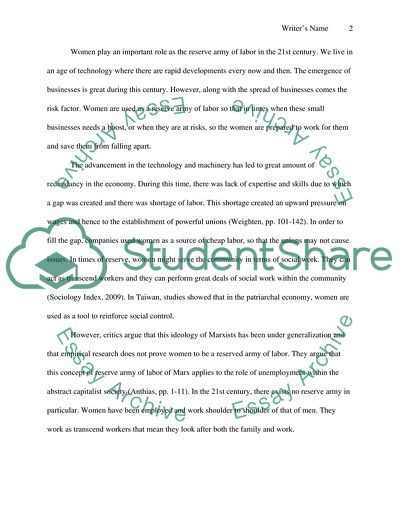Cite this document
(“Women as Reserve Army of Labour Essay Example | Topics and Well Written Essays - 1750 words”, n.d.)
Women as Reserve Army of Labour Essay Example | Topics and Well Written Essays - 1750 words. Retrieved from https://studentshare.org/sociology/1577003-women-as-reserve-army-of-labour
Women as Reserve Army of Labour Essay Example | Topics and Well Written Essays - 1750 words. Retrieved from https://studentshare.org/sociology/1577003-women-as-reserve-army-of-labour
(Women As Reserve Army of Labour Essay Example | Topics and Well Written Essays - 1750 Words)
Women As Reserve Army of Labour Essay Example | Topics and Well Written Essays - 1750 Words. https://studentshare.org/sociology/1577003-women-as-reserve-army-of-labour.
Women As Reserve Army of Labour Essay Example | Topics and Well Written Essays - 1750 Words. https://studentshare.org/sociology/1577003-women-as-reserve-army-of-labour.
“Women As Reserve Army of Labour Essay Example | Topics and Well Written Essays - 1750 Words”, n.d. https://studentshare.org/sociology/1577003-women-as-reserve-army-of-labour.


